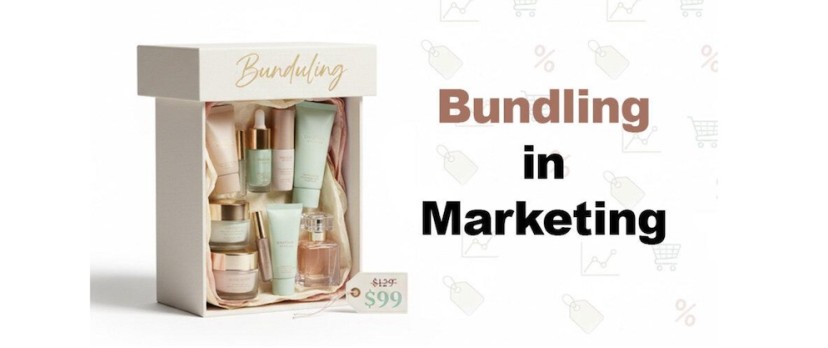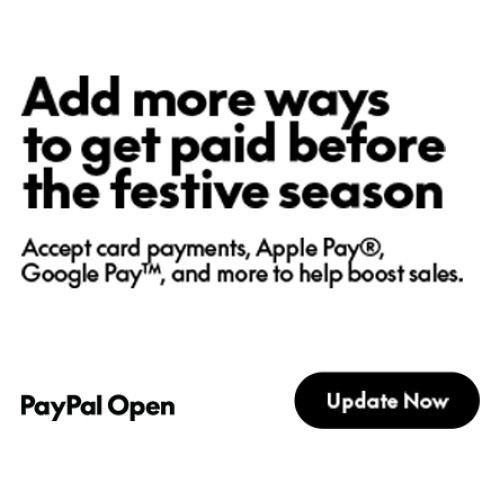Shoppers buy 10–15% more with bundles vs. individual offers. This means that a good product bundling strategy makes your business win! Deals come in many forms: discounts, vouchers, or product bundles offered at a reduced price.
This is where bundling in marketing can make or break your business path. To increase sales in your shop by using strategic bundling, it's essential to understand what bundling is, how to plan your bundling marketing strategy, and why strategic bundling is effective.
In this article, we’ll cover all these aspects and more.
Let’s begin with the question, “What is Bundling in Marketing?” to prepare you for implementing this strategy in your business.
What Is Bundling in Marketing?
Bundling in marketing means offering customers multiple products or services together. Typically, these bundles are discounted, meaning the individual prices of the products or services would be higher if purchased separately.
By implementing bundling in business, you:
facilitate easier decision-making for customers
encourage them to buy more than one product or service and enhance their perception of value.
Bundling can be used across various sectors, including SaaS, e-commerce, direct-to-consumer (DTC), travel, and services. This strategy allows businesses to create more value for customers while boosting sales.
In the SaaS industry, companies often bundle features or applications into plans, ensuring users get everything they need in one place. In e-commerce, stores frequently pair related items in "frequently bought together" deals to increase cart size. DTC brands commonly offer starter kits or product bundles that help new customers try an entire routine easily. In the travel sector, bundling flights, hotels, and activities not only saves time but also feels like a better deal.
In services, package tiers (like "bronze, silver, gold") simplify the process for clients when choosing and committing to a service. Regardless of the industry, bundling streamlines decisions, enhances perceived value, and fosters customer loyalty.
Why Bundling Works – The Psychology Behind It
Remember all the times you bought a package. What made you choose a bundle instead of buying individual items or the components separately? The answer lies in the psychology behind the bundling technique.
1. Simplified Decision-Making
The bundling technique alleviates the stress of having to compare multiple options. According to choice reduction theory, an abundance of choices can lead to decision fatigue. When customers are presented with a single, clear package rather than a variety of individual options, they tend to feel more confident and make decisions more quickly.
2. Perception of a Smart Deal
With a bundling marketing strategy, the price is always framed as a saving. This activates a cognitive bias where customers believe they’re getting more value than they actually are. Even if the real savings are small, the brain interprets it as a “win,” leaving buyers feeling clever and satisfied with their purchase.
3. Increased Value Perception
When individual prices are shown first, the technique makes the lower bundle price look like a bargain. That contrast creates a strong sense of higher value.
Now that we understand what bundling in marketing is and why it works, it's time to explore strategies we can implement in our own business.
Types of Bundling Strategies
Like any other marketing activity, bundling has different strategies that you should choose based on your business type. By using the right strategy, you can transform your business from potential failure to success. To select the right one, it's essential to understand their specific meanings and why they are effective. Here are the main three:
Pure Bundling
Pure Bundling is a type of strategic bundling where customers can only purchase products or services in bundles, not individually. This strategy simplifies the decision-making process for customers, allowing them to receive a comprehensive solution as a package.
For example, consider a cable TV subscription that only offers a set of channels with no option for individual channels. This approach helps customers access all the channels they want in a single deal, making it an easier decision for them.
Mixed Bundling
Mixed Bundling is a bundling sales strategy where customers can choose to purchase products or services either individually or as part of a bundle. This strategy appeals to a wider audience by giving freedom of choice while still presenting the bundle as the smarter, more economical option.
For example, a fast-food restaurant may sell burgers, fries, and drinks separately, but also offer them together as a combo at a discounted price. This approach encourages customers to choose the bundle since it feels more convenient and cost-effective.
Price Anchoring Bundles
Price Anchoring Bundles are a bundling sales strategy that include a premium or high-value item in the package, making the rest of the bundle appear more affordable and attractive. This technique relies on the anchoring effect, a psychological principle often used in bundling in marketing, where the higher price of one item sets a reference point that boosts the perceived value of the entire bundle.
For example, a tech company might offer a bundle that includes a premium tablet along with headphones and accessories. Even if customers are most interested in the accessories, the presence of the high-priced tablet makes the whole bundle feel like a better deal.
How to Build a Strategic Product Bundling Strategy?
Creating a product bundling strategy can be easy when you follow a detailed framework. Start with a step-by-step approach to develop a strategy tailored to your business needs.
To dive into a step-by-step framework for creating a product bundling strategy, follow these key steps:
Identify complementary or frequently bought-together products
Start by finding products that are naturally purchased together. It doesn’t matter if these products are related in use; what’s important is that customers are more likely to buy them together. Identifying these pairings can help you better understand your customers' preferences (For example a phone and headphones, travel mugs and cutlery, etc)
Analyze buying patterns
Examine all of your sales patterns to understand what customers want to pair, rather than relying on your assumptions. Through this analysis, you can identify bundles that are more likely to succeed.
Test different combinations and price points
On your strategic bundling, experiment with various bundle options and pricing strategies to identify what resonates best with customers.
Monitor impact on AOV, churn, and margin
Track how your strategic bundling affects key metrics like average order value (AOV), customer churn, and overall profit margin. Monitoring these numbers ensures that your product bundling strategy is not only boosting sales but also sustainable for your business.
Iterate and refine
A strong product bundling strategy is never one-and-done. Keep testing, reviewing results, and refining your bundles over time. Continuous improvement helps you adapt to customer behavior and market changes, making your strategic bundling more effective in the long run.
When implementing a product bundling strategy, it’s important to apply effective pricing logic as well. There are four main types of bundle pricing models:
Flat / Fixed Price: This approach keeps things straightforward. For example, “Get all three for $49.” There's no math involved and no guessing; it's simply a clear offer.
Percentage-Off Bundle: This model highlights the savings upfront. An example would be, “Buy together and save 15%.” Customers can immediately grasp the benefit.
BOGO (Buy One, Get One): This method rewards customers for making an additional purchase. You might say, “Buy one, get the second at half price” or “Buy X, get Y free.” It feels like a bonus rather than just a discount.
Tiered Pricing: This strategy encourages larger purchases. For instance, you could offer, “Buy 2, save 10%” or “Buy 3, save 20%.” The more items they add to their cart, the better the deal becomes.
Many eCommerce merchants manage and automate these offers through a Shopify product bundle app, which helps them test different pricing combinations without manual setup
Examples of Successful Bundling in Marketing
Real-world examples demonstrate how an effective bundling marketing strategy adds value for both businesses and customers. Interested in using bundling in marketing? Here are some of the most successful examples:
Adobe Creative Cloud
Every designer needs Adobe tools to perform their job effectively. This company offers a monthly bundle of design tools, including Photoshop, Illustrator, and Premiere Pro. Instead of buying each one separately, customers get a full creative suite for a single subscription.
Adobe's bundling marketing strategy provides high perceived value and positions Adobe as the all-in-one creative solution.
McDonald’s Value Meals
McDonald’s is a prime example of successful bundling in marketing. The fast-food giant pioneered this strategy in the quick-service restaurant (QSR) industry with its value meals, which typically include a burger, fries, and a drink. Customers perceive these value meals as a standard option rather than just a promotion. This bundling strategy is effective because it simplifies the decision-making process for customers and fosters loyalty for future purchases due to its convenience and affordability.
Spotify + Hulu
Spotify partnered with Hulu to offer a joint subscription bundle at a lower combined price. Customers gain access to both music and TV streaming under one plan, making entertainment more accessible and affordable.
This bundling marketing strategy works because it delivers added value while expanding the audience for both brands. Customers feel like they are getting “two for the price of one,” which boosts adoption and strengthens loyalty.
SaaS Onboarding Bundles
Many SaaS companies use a bundle app or internal automation to package services such as setup, training, and customer support into a single onboarding bundle. Instead of charging separately, they present it as a single, streamlined offer that makes getting started with the product easier.
This bundling strategy is effective because it reduces friction for new users, ensures they see value faster, and increases long-term retention by creating a smoother customer experience.
Common Mistakes to Avoid in Bundling
When planning for bundling in marketing, brands often make common mistakes. If you don't want to be one of them, avoid these pitfalls:
Bundling unrelated items
Bundling unrelated items is a common mistake in product bundling strategy, a common mistake is. This can confuse customers and may cause them to lose trust in your brand. All bundles should feel natural and not forced; relevance is the key to creating value for your customers.
Too much discount
When planning a long-term strategic bundling approach, offering excessive discounts can be counterproductive. Initially, it may lead to higher sales, but it also conditions your customers to expect only discounted bundles. A smart bundling strategy should find a balance between providing perceived savings and maintaining profitability.
Not analyzing post-bundle performance
One of the biggest mistakes in a bundling marketing strategy is failing to measure what happens after the bundle is launched. While sales may spike initially, ignoring key metrics like churn, returns, and profit margins can harm your business in the long run. Successful bundling requires continuous monitoring to ensure that the strategy creates sustainable value rather than short-term gains.
Copy-pasting competitors’ strategies
Simply copying what competitors are doing without understanding your own customers is a costly error. What works for one brand may not work for another, as buying behaviors and expectations differ across audiences. Instead of imitating, focus on customer insights and tailor bundles that genuinely meet your buyers’ needs.
Bonus: When Bundling Doesn’t Work
Bundling is a great strategy in marketing, but it doesn't include all varieties of products or services. There are some cases where bundling doesn't work. Here are some examples of it:
B2B tools with long sales cycles
In B2B markets, particularly for software or enterprise tools, buying decisions often take months and involve multiple stakeholders. Bundling in these cases can create additional complexity and further delay the decision. Simplicity, not packages, often works better in this case.
High-end or personalized products
For luxury or highly personalized items, customers value exclusivity and customization above all else. Bundling these products can cheapen the experience and reduce the perception of premium value, making buyers less likely to convert.
Over-complicated packages
If a bundle includes too many items or confusing tiers, customers may feel overwhelmed rather than encouraged to make a purchase. In this case, bundling works against you by adding decision fatigue and lowering conversion rates.
Pros & Cons of Bundling in Marketing
If you are deciding on your bundling marketing strategy, this table may assist you:
Bundling is not a shortcut to higher sales; it’s a framework for aligning customer psychology with business goals. A thoughtful product bundling strategy can simplify choices, elevate perceived value, and encourage discovery, but it requires careful testing and refinement. The brands that succeed with strategic bundling are those that adapt bundles to real customer needs, measure the results, and evolve continuously.



Login and write down your comment.
Login my OpenCart Account